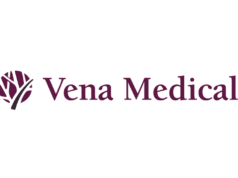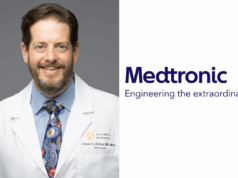
Philip M Meyers, associate professor of Radiology and Neurological Surgery, Columbia University, College of Physcians and Surgeons, New York, USA, tells NeuroNews about how he went from wanting to drive an ambulance to helping shape the future of the field as president of the Society of NeuroInterventional Surgery (SNIS) 2013.
How did you come to choose medicine? What drew you to radiology and later, neuroradiology?
As a small child, I chose medicine after I stopped wanting to pump petroleum. I mistook the person who drove an ambulance for the physician. I wanted to drive the ambulance. I came to radiology indirectly. I became interested in catheter interventions for cerebrovascular disease during residency training. My chairman suggested: “Phil, I would learn to work those catheters.” I suppose I did.
Which innovations in neuroradiology have shaped your career?
Catheter interventions for stroke shaped my career. I went into radiology for the interventional neuroradiology component. Coil occlusion of cerebral aneurysms had just been introduced when I began my residency. It was a compelling new strategy to treat non-surgical cerebral vascular disease. Dr Thomas Tomsick was principal investigator of the Cordis NBCA Glue Trial while I was a resident. This also represented an exciting new way that neurointerventionalists were able to treat cerebral arteriovenous malformations (AVMs).
Who were your mentors in the field and what do you still remember from their wisdom?
Robert Lukin and Thomas Tomsick were my first mentors in neuroradiology. I had followed Dr Lukin for a month as a medical student. He and Dr Tomsick are consummate neuroradiologists and expert diagnosticians. I watched Dr Tomsick perform neurointerventional procedures during my residency and diagnostic fellowship. I then underwent my dedicated neurointerventional training at University of California San Francisco (UCSF) under the direction of Randy Higashida, Van Halbach, and Chris Dowd. In the late 1990s, UCSF was perhaps the busiest neurointerventional centre in the USA. That was a fantastic experience, the best part of my clinical medical education. Neurointerventional procedures offer powerful means to address complex cerebrovascular diseases, but there are limitations. Paradoxically, it is so important to recognise the limitations to be successful. The fellowship training at UCSF provided an opportunity to develop my understanding of these issues before I went into practice.
In your view, after the publication of trials in February 2013 (IMS III, MR RESCUE and SYNTHESIS) what is the status of intra-arterial thrombolysis?
The three acute stroke intervention trials published in NEJM in February 2013 have had some interesting effects on our field. The negative outcomes in each study have raised real concerns about the role of intervention for acute ischaemic stroke in the medical neurology community. Meanwhile the studies have helped to focus the interventional community on better identification of the target subpopulation who will benefit from intervention. It has always been clear than many stroke patients arrive at the emergency room too late to benefit from revascularisation; in fact for a select number, treatment would be harmful rather than beneficial. The reality is every interventionalist can show case examples of patients who recovered neurological function following treatment. But, treating all stroke victims with severe strokes out to eight hours or longer after stroke onset is not the answer either. So, the most prudent thing we can do is assess not only the trial data, but the trial platform and design—embrace the lessons learnt, identify opportunities for improvement, and develop a plan of action.
That would include re-examining our stroke systems of care, particularly in the United States to dramatically reduce triage time for treatment. Research suggests that more patients will benefit from very rapid intervention. Additionally, the neuroimaging community must redouble its efforts to identify which patients arriving at later time points still have viable brain tissue from adequate collaterals to benefit from catheter thromboembolectomy. This will be an important step as our next series of stroke trials must focus on the patients most likely to benefit in order to establish a positive basis for treatment. Patient selection is as fundamental as the importance of time to treatment. On all of these points, I think we have broad consensus in the neurointerventional community. At this year’s SNIS Annual Meeting, it was readily apparent that practitioners understand the necessity of this kind of approach.
What are the key things to keep in mind when developing standards of practice in neurointerventional surgery?
Standards of practice need to reflect an evolution in the technical innovations and best practices in the neurointerventional discipline. The number of physicians in the neurosciences practicing neurointerventional procedures is expanding rapidly. Due to the relative rarity of many diseases treated by neurointerventionalists such as aneurysms, arteriovenous malformations, and dural arteriovenous fistulas and the investigative status of intervention for acute ischaemic stroke, there is increasing urgency to address issues related to training and practice competence to ensure the future relevance of neurointerventional procedures as well as optimum patient care.
What are the essential things to ensure when undertaking emergency cases in stroke?
From an organisational perspective, time remains one of the most critical considerations in the delivery of emergency stroke care. Trial data continues to point to the absolute necessity for rapid medical and procedural intervention. Yet, still, significant regional disparities persist in the delivery of acute stroke care. As a medical community, we must advocate for the identification and institutionalisation of best practices and we need to use reasonable methods to arrive at viable solutions. For example, different models may be needed in complex urban, suburban, and rural settings. We also need to understand how to navigate the political, regulatory, and funding agency terrain where it concerns their visions for delivery of care. Clarification on this point must take place in the next few years to build greater efficiency into the system against the backdrop of our most current knowledge. This will not be easy; but it is absolutely essential.
A case where interventional neuroradiology came to the rescue…
Success in practice is measured by favourable outcomes in each patient, one at a time. There are so many stories. That is what makes medicine so interesting. The human drama plays out fairly quickly in the operating room or post-treament, compared with many business endeavours. Some of my favourite stories relate to the children I have treated. For instance, I think of children with vein of Galen malformations that I have followed over time. One story always serves to remind me why I do what I do. A boy with a vein of Galen malformation and severe heart failure was brought to me immediately after birth, and I was able to cure him of his condition. Twelve years old now, he is one of the top performers in his class, and quite a comedian. I always look forward to his visits, as he is a living testament to the viability of this field and the role of neurointervention in saving lives or restoring quality of life.
What are the questions in therapeutic neuroradiology that you like to see answered?
I have many questions about therapeutic neuroradiology, originating from the various roles I play in the medical establishment. I am convinced of the benefit of neurointerventional procedures, but the relative newness of our field still requires our commitment and dedication to shape it. As a health consumer, I want capable, competent, and experienced physicians treating me, my family and friends if and when the need arises. As one of many “guardians” of neurointerventional practice, I want to know whether there will be a specialty board to define the training, and monitor the practice and continuing education of physicians engaged in neurointerventional care. And I want to know how young physicians training in neurointerventional fellowships will be ensured adequate education and experience to become safe and proficient in their trade. As a medical care-giver, I want to know how our health delivery systems will evolve to address the needs of patients with complex diseases like those treated by neurointerventionalists. How will we ensure that each patient reaches an expert most likely to treat him or her successfully? And as a scientist, I want to know how the field will evolve away from the use of X-ray (ionising radiation) to accomplish neurointerventional procedures. With the increasing complexity and duration of neuronterventional procedures, I think there is a new chapter dedicated to radiation in medicine that we need to write.
What new techniques/technologies are you keeping an eye on?
In the near term, the treatment of acute thrombembolic stroke and unruptured cerebral aneurysms will make or break the discipline. Longer term, the treatment of neoplastic diseases, perhaps even neurodegenerative conditions, and use of non-ionising imaging methods, represent exciting frontiers in neuronterventional medicine.
As president of SNIS in 2013, what are your goals for the society?
I have several goals for the year. The annual meeting is our most important venue and remains the primary multidiscliplinary educational meeting for neurointerventionalists in the USA and beyond.
Certification of neurointerventional training programmes, as well as certification, maintenance of certification, and continuing medical education (CME) are also important initiatives of SNIS. American Board of Medical Specialties (ABMS) certification remains a goal in the United States but will require the cooperation and participation of several parent organisations including the American Board of Radiology (ABR), the American Board of Neurological Surgery (ABNS), and the American Board of Psychiatry and Neurology (ABPN). The politics are still unclear at this time, but the need is in sharp focus: recognition of a medical discipline in endovascular surgical neuroradiology requires excellence in practice and education. There is an ACMGE-certified training pathway in the United States, but relatively few programmes participate in this programme at present for a variety of reasons. Working together, the SNIS would like to establish a set of standards agreed upon by all parties for the betterment of the specialty.
To face growing headwinds in medical reimbursement and to address questions about procedural efficacy in neurointervention, the SNIS has embarked on a project to create a multimodule disease-specific registry. The goal is to generate longer-term outcomes data beyond that the standard randomised, controlled trial format with a five-year funding horizon can capture. The first of these modules should be ready for rollout in late 2013.
The Journal of NeuroInterventional Surgery (JNIS) has become a very successful and independent voice of neurointerventionalists around the world. Under the direction of past SNIS president Robert Tarr, and published by British Medical Journal Publishing Group, the impact factor of the journal has substantially increased, and JNIS is now ranked among the top ten neuroimaging journals. The SNIS is dedicated to the support of JNIS and maintenance of the journal’s academic freedom.
The SNIS Foundation was formed to fulfill the education and research initiatives of society. Under the leadership of past president Lee Jensen, the SNIS Foundation will help promote the intellectual development of the specialty.
There is a growing need for advocacy in neurointervention, and SNIS supports its members who provide expert advice and testimony for neurointerventional procedures and initiatives. With the expected increase in the number of neurointerventional procedures and a growing body of scientific evidence, the number of opportunities to represent the field in regulatory and advisory forums has increased dramatically in recent years.
I am fortunate to join a long line of former presidents, whose vision and pioneering spirit brought many of these initiatives to life.
What are your interests outside of medicine?
I enjoy winter sports like skiing, hunting, and digital photography.
Current positions
Associate professor, Radiology and Neurological Surgery
Columbia University, College of Physicians and Surgeons
Clinical director, Neuroendovascular Service New York Presbyterian–Columbia
Neurological Institute of New York
Previous appointments
2000–2001 Assistant attending, Department of Radiology, Minneapolis, USA
1998–2000 Clinical instructor, Department of Radiology, San Francisco, USA
Post-doctoral training
1998–2000 Clinical fellow and clinical instructor, Interventional Neuroradiology Neurovascular Medical Group, Inc, Department of Radiology, UCSF, San Francisco, USA
1997–1998 Clinical fellow in Neuroradiology, Department of Radiology, University of Cincinnati Cincinnati, USA
Education
1989 Case Western Reserve, School of Medicine Cleveland,
1985 Harvard University, College of Arts and Sciences Cambridge, USA
Board qualifications
American Board of Radiology
Certificate of Added Qualification, Neuroradiology










